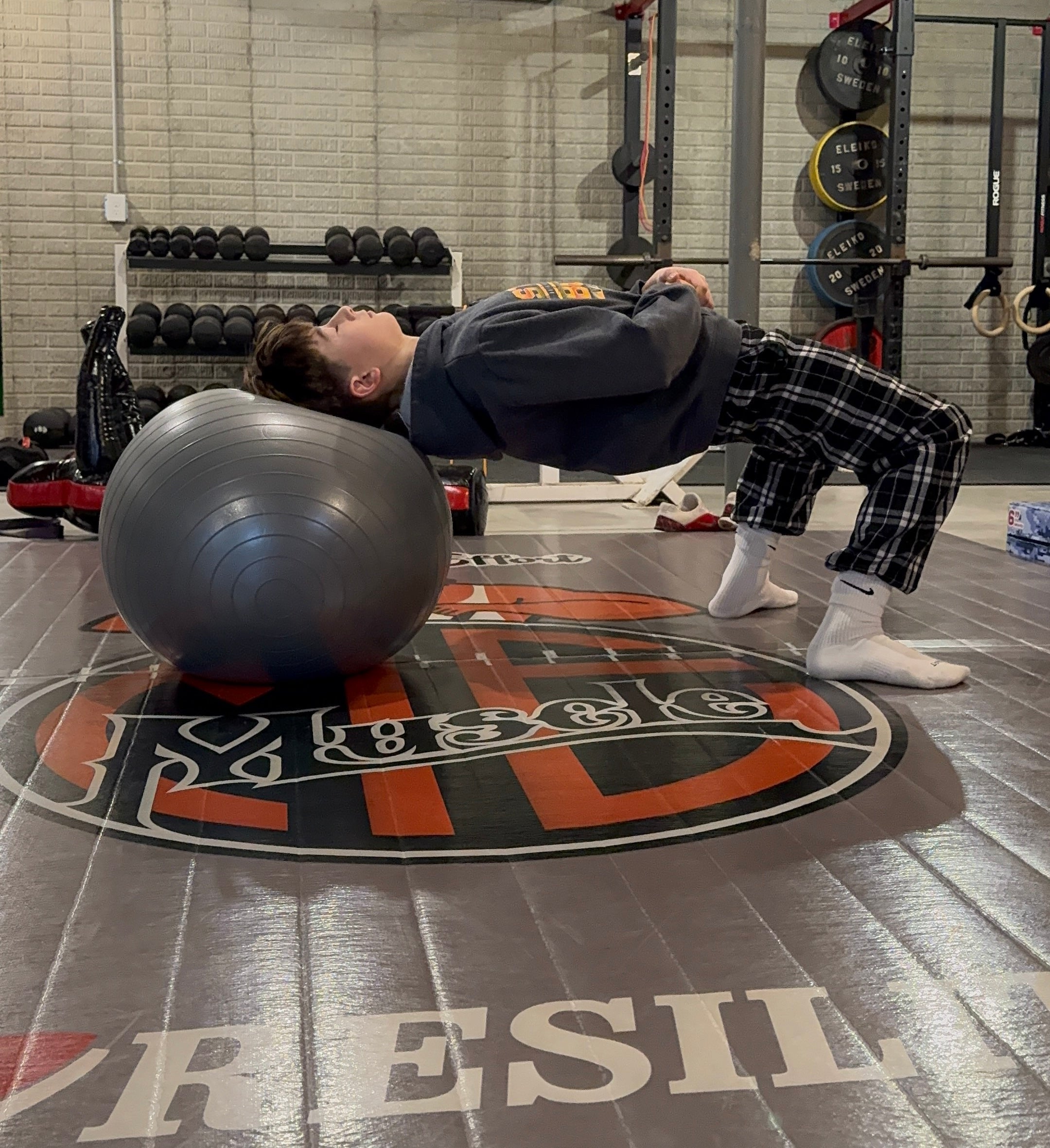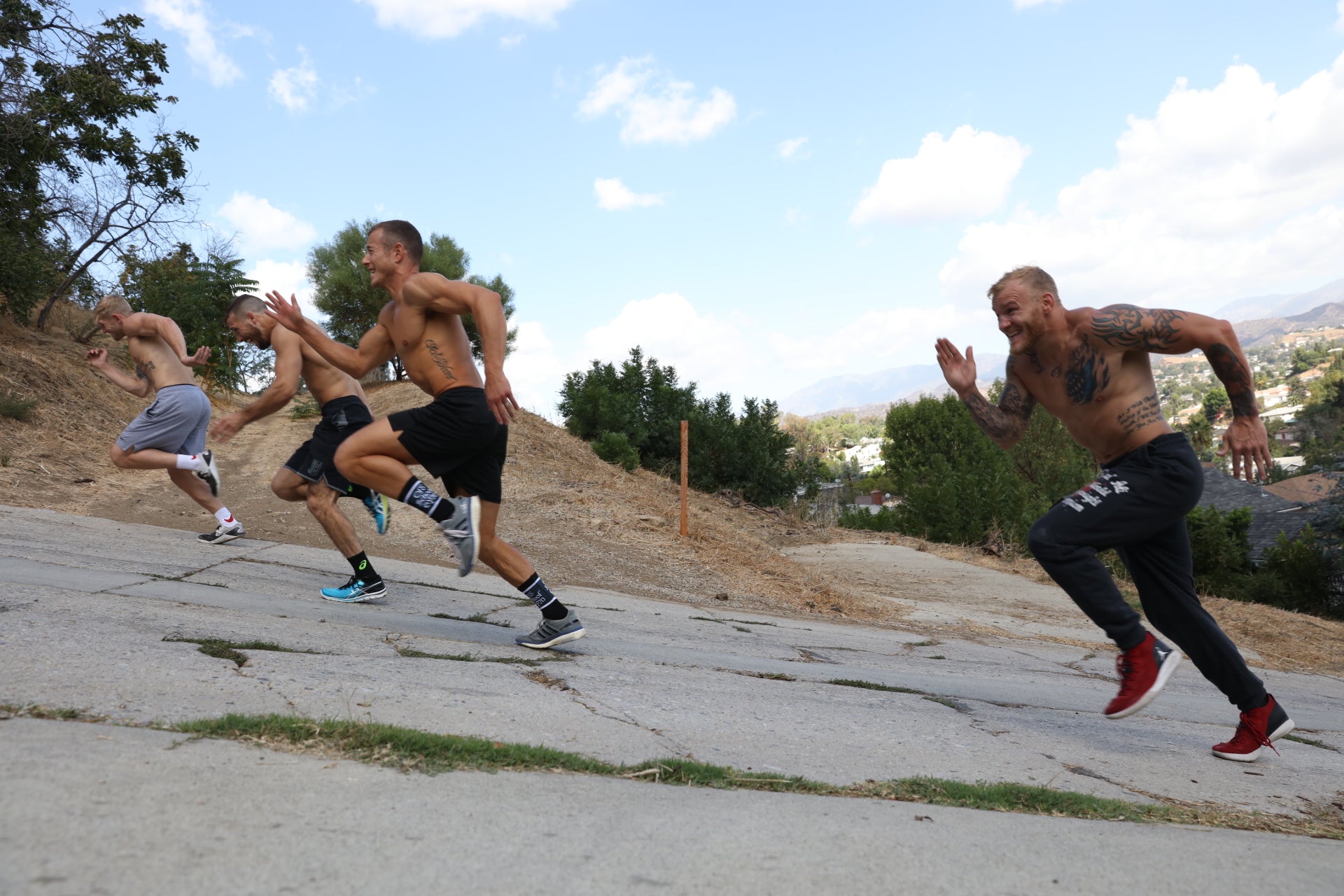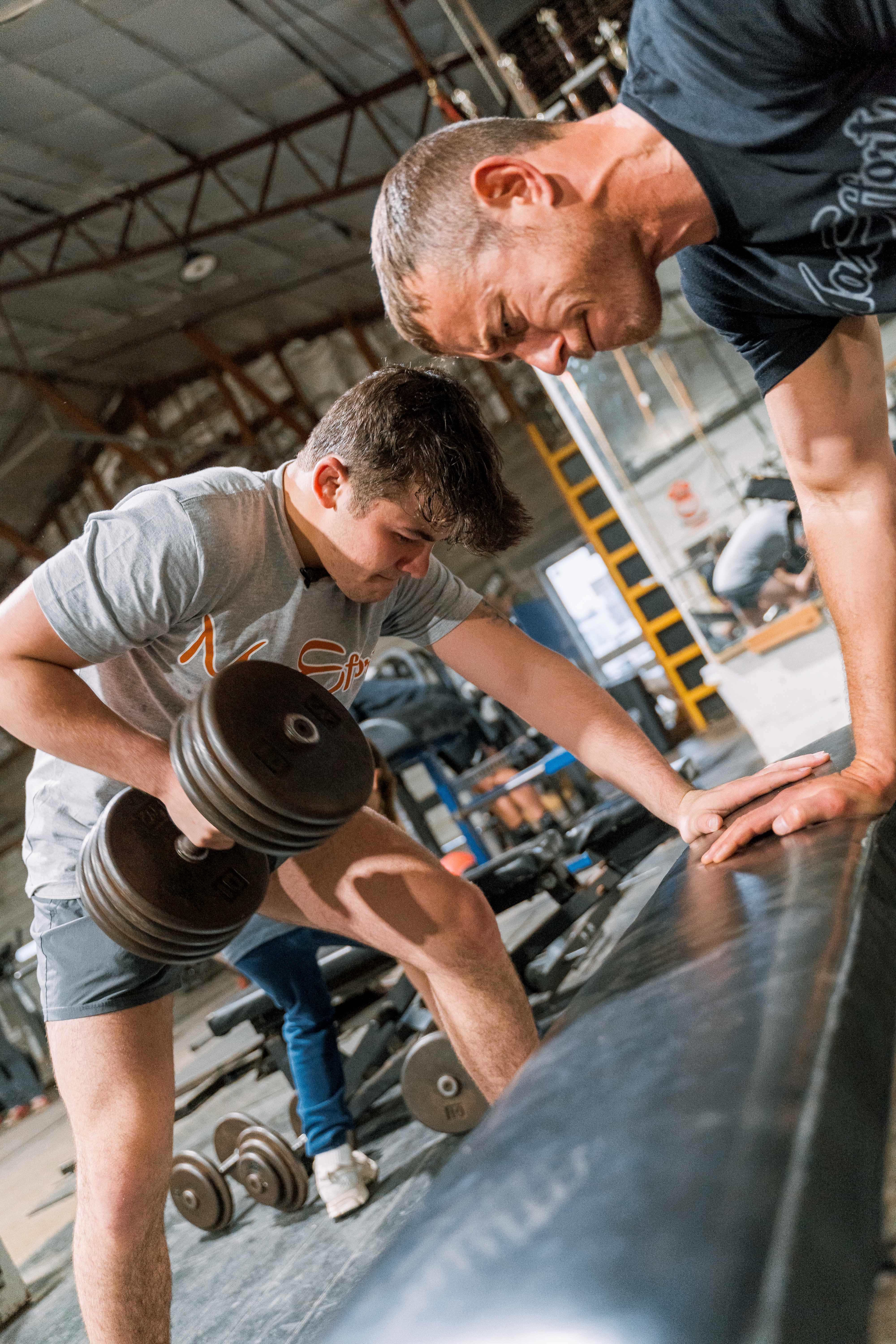One of the biggest challenges for fitness enthusiasts who travel is maintaining their workout routine without access to a fully-equipped gym. Among the exercises that travelers miss most are pull-ups – a foundational movement that builds impressive upper body strength and definition.
This guide outlines everything you need to know about mastering the pull-up, even while traveling. Yes, you can develop this skill in weeks (not months or years), regardless of where your journeys take you.
We’ll also share information about equipment options that could make pull-up training more accessible during your travels, so let’s dive in.
Why Pull-Ups Are the Perfect Travel Exercise
Pull-ups are one of the most effective bodyweight exercises for building upper body strength, improving stability, and developing grip strength. When you perform a pull-up, you’re engaging your forearms, biceps, and back muscles – particularly the latissimus dorsi, the largest muscle in your upper body.
The benefits of incorporating pull-ups into your fitness routine include:
- Complete upper body development – builds a broad, muscular back that showcases your fitness level
- Improved grip strength – crucial for overall functional fitness
- Minimal equipment needs – requires only a sturdy bar
- Progressive overload potential – easily scalable for continuous improvement
- Functional strength – translates to real-world activities and sports performance
You can perform pull-ups with either an overhand grip (palms facing away, traditional pull-up) or an underhand grip (palms facing you, also known as a chin-up). Each variation targets muscles slightly differently, allowing for comprehensive development.
Mastering Pull-Ups in Just a Few Weeks
Many travelers believe pull-ups are beyond their reach, especially if they currently can’t perform a single repetition. However, with the right approach, most people can develop the necessary strength within weeks, not months or years. Here’s how:
1. Master the Eccentric Pull-Up
If you can’t yet pull yourself up, focus on the lowering phase (eccentric contraction). Start at the top position by jumping or stepping on something, then lower yourself as slowly as possible. This builds the necessary muscle strength and coordination. You can watch this video for more guidance on the execution of an eccentric pull-up.
Aim to gradually increase your lowering time. When you can control the descent for 45-60 seconds, you’ll likely have developed enough strength for a complete pull-up.
2. Use Resistance Bands
Resistance bands are a traveler’s best friend – lightweight, packable, and versatile. For pull-up training, loop a band over your pull-up surface and place your foot or knee in it for assistance.
The band provides the most help at the bottom of the movement (where pull-ups are hardest) and less assistance as you reach the top position. This creates a natural progression toward unassisted pull-ups.
Packing tip: A medium-strength resistance band takes up minimal space in your luggage and can be used for dozens of exercises in your hotel room.
3. Incorporate Inverted Rows
Inverted rows are an excellent progression exercise that follows a similar movement pattern to pull-ups but with less body weight to lift. Since your feet remain on the ground, you can adjust the difficulty by changing your body angle.
Travel tip: Most hotel rooms have a sturdy door you can use with a towel to start your inverted row training.
These can be performed under a sturdy table or desk in nearly any hotel room – making them perfect for travel.
4. Consider Your Weight-to-Strength Ratio
This isn’t about body shaming but simple physics: the less you weigh, the easier it is to pull yourself up. If weight loss aligns with your fitness goals, improving your body composition can help achieve your first pull-up faster.
For travelers, this might mean being mindful of nutrition choices while on the road – enjoying local cuisine in moderation while maintaining adequate protein intake to support muscle development.
5. Practice Frequently
Like any skill, pull-up proficiency improves with consistent practice. Even when traveling, try this simple weekly schedule:
- Monday: Eccentric pull-ups
- Tuesday: Rest
- Wednesday: Band-assisted pull-ups
- Thursday: Rest
- Friday: Inverted rows
- Saturday & Sunday: Active recovery (walking tours, swimming, etc.)
Hotel Room Pull-Up Solutions
Contrary to what many believe, you don’t need a dedicated pull-up bar to maintain your training while traveling. Here are creative solutions that work in almost any hotel room:
Option 1: Towel Pull-Ups
This technique transforms any standard hotel room door into a pull-up station:
- Fold a bath towel in half and place the towel over the top of the door with equal amounts hanging on each side
- Close the door completely, ensuring the towel is securely pinched
- Grab both ends of the towel, bend your knees, and perform your pull-ups
- Exercise caution to avoid hitting your head on the door frame
While hotel towels are designed to withstand regular use, be respectful and avoid excessive strain on the material.
While not a direct pull-up alternative, dips complement pull-ups by strengthening the pushing muscles:
- Position a chair with its back against a wall for stability
- Sit on the edge and place your hands beside your hips
- Walk your feet forward and slide your buttocks off the chair
- Lower your body by bending your elbows, then push back up
These primarily target your triceps but also engage your chest and shoulders.
Option 3: Desk/Table Inverted Rows
Almost every hotel room has a desk or table you can use for rows:
- Position yourself under a sturdy desk or table
- Grab the edge with both hands at shoulder width
- Extend your body with heels on the floor
- Pull your chest toward the edge of the desk/table
- Lower back down with control
Adjust your foot position to increase or decrease difficulty – the more horizontal your body, the more challenging the exercise.
Portable Pull-Up Equipment Options
For frequent travelers committed to their pull-up progression, investing in portable equipment might be worthwhile. Here’s a quick comparison of the best portable pull-up solutions for travelers:
- Regular Pullup & Dip Bar: Ideal for long-term travelers who prioritize quality and stability; heavier (9.2 pounds/4.2 kg) and premium-priced, but offers the most complete solution.
- Pullup & Dip Bar Telescope: A lighter alternative (3.9 pounds/1.8 kg) at a lower price point; perfect for frequent travelers who need to minimize weight.
- TRX Suspension Trainer: Extremely versatile beyond just pull-up training; very lightweight (less than 2 pounds) but still premium-priced; works well in hotel gyms too. –
- Resistance Bands: The budget-friendly option; ultra-lightweight, packable, and can be used for dozens of other exercises; best for beginners or as a supplement to other equipment.
Let’s explore each option in more detail:
Doorway Pull-Up Bars
For travelers serious about maintaining their pull-up routine, doorway pull-up bars offer the most authentic training experience. After testing numerous models in different hotel settings, we’ve found several standout options worth considering:
Traditional doorway bars use leverage and pressure to stay secure without drilling or permanent installation—perfect for hotel rooms. The best travel-friendly models feature:
- Quick assembly: Setup in under 2 minutes without tools
- Compact design: Breaking down to fit in standard luggage
- Multiple grip positions: Allowing for training variation
- Weight capacity: Supporting 250-300 pounds when properly installed
- Door frame compatibility: Adjustable to fit standard door frames (28-36 inches)
When selecting a doorway bar for travel, prioritize models with protective padding to prevent damage to hotel door frames. Many travelers report success with telescoping models that use twist-lock mechanisms rather than ratcheting systems, as they tend to be lighter and less bulky.
The most travel-friendly bars typically weigh between 2-5 pounds while still providing the stability needed for effective training. Look for options with removable components that can be packed flat in your luggage.
The Pullup & Dip Solution
For dedicated fitness travelers who want quality equipment on the go, the Pullup & Dip portable bar offers a solution that works well in various travel environments.
What Makes the Pullup & Dip Bar Stand Out
Our testing across various travel scenarios revealed these advantages:
- Professional-grade construction: Solid metal components that inspire confidence during use
- Dual functionality: Quickly converts between pull-up and dip configurations
- Versatile mounting options: Includes both indoor wall adapters and outdoor attachments for trees or poles
- Multiple grip variations: Allows for neutral, wide, and standard grip positions
- Quick assembly: Once familiar with the components, setup takes just 1-2 minutes
The ergonomic handles with textured surfaces provide excellent grip even during intense workouts, and the stable foundation eliminates wobbling often experienced with doorway bars.
Indoor and Outdoor Versatility
What truly separates this system from competitors is its adaptability to various environments:
- Indoor wall mounting: The triangular wall adapter provides secure attachment to solid walls
- Outdoor functionality: The specialized adapter wraps around trees or poles (4-12 inches in diameter) using protective mats and tension belts
- Quick transition: The main bar detaches and reattaches in seconds, allowing you to switch between pull-ups and dips mid-workout
For frequent travelers who enjoy outdoor workouts, this dual functionality means you can mount the bar in your hotel room for morning sessions and take it to a nearby park for afternoon training.
Considerations for Travelers
The Regular Pullup & Dip Bar:
- Weight: At approximately 9.2 pounds (4.2 kg), it adds significant weight to your luggage
- Setup requirements: Indoor installation requires drilling (not suitable for hotel rooms unless using the outdoor adapter with a sturdy piece of furniture)
- Price point: Premium construction commands a higher investment than basic travel fitness equipment
- Movement limitations: The mounting system may restrict certain advanced movements like muscle-ups or front levers
The Pullup & Dip Telescope Alternative:
- Weight: Significantly lighter at just 3.9 pounds (1.8 kg), more compact for easier packing
- Setup requirements: Mounts directly between door frames without drilling
- Price point: More affordable than the regular version
- Movement limitations: Provides fewer grip options and less stability than the regular version
For long-term travel or extended stays, the benefits of the regular bar may outweigh its limitations, especially for serious fitness enthusiasts who prioritize maintaining their strength routine. For frequent travelers or those conscious of luggage weight, the Telescope version offers an excellent compromise.
Reader Benefit: If you decide the Pullup & Dip bar is right for your travel fitness needs, use discount code “HOTELGYMS10” for 10% off your order on the Pullup & Dip website. Their products are also available on Amazon, for those who prefer to shop there.
Suspension Trainers
Systems like TRX or similar brands offer door anchors that allow for inverted row variations. While not providing true pull-up functionality, they’re excellent for maintaining pulling strength while traveling.
Suspension trainers represent perhaps the most versatile piece of travel fitness equipment, weighing less than 2 pounds but enabling hundreds of exercise variations. For pull-up progression, the inverted row performed on a suspension trainer targets the same muscle groups while allowing you to adjust difficulty by changing your body angle.
For a comprehensive breakdown of how to maximize suspension training during travel, check out our Complete Guide to TRX Training in Hotel Rooms, where we cover everything from setup safety to advanced pulling progressions that complement your pull-up training.
Building a Complete Hotel Room Workout
Pull-ups and their variations form the foundation of an effective upper-body pulling routine, but a complete workout requires pushing movements as well. Here’s how to balance your training:
Pull-Up and Dip Comparison: Pull-ups work your biceps and back muscles (pulling muscles), while dips target your triceps and chest (pushing muscles). Both exercises effectively build upper body strength using only your body weight.
Most people find dips easier to learn initially since pushing movements often feel more natural than pulling your entire body weight.
Creating Balance: For every pull-up variation in your routine, include a complementary pushing exercise:
- Pull-ups paired with push-ups
- Inverted rows paired with chair dips
- Band-assisted pull-ups paired with elevated pike push-ups
This balanced approach ensures complete development and reduces the risk of muscular imbalances that can lead to injury.
Dips, Pull- and Push-ups?
Are dips better than pull-ups? These exercises actually complement each other perfectly. Pull-ups work your biceps and back muscles, while dips target your triceps and chest, along with your shoulder deltoids.
Both exercises are foundational bodyweight movements, though many people find dips initially easier since pushing movements can feel more natural than pulling your entire body weight.
What about push-ups versus dips? Dips typically allow for greater chest development and triceps engagement, especially for targeting the lower chest. Push-ups offer more versatility and can be modified for different fitness levels. They’re excellent for building endurance and serve as a foundation for more advanced pushing movements.
We’ll explore how to master push-ups in an upcoming blog post, so stay tuned!
Final Thoughts for the Traveling Fitness Enthusiast
Maintaining your pull-up strength while traveling isn’t just possible – it can be an opportunity to get creative with your fitness routine and discover new training methods. The versatility of pull-up variations means you can continue progressing regardless of your accommodation situation.
Remember that consistency trumps perfection. Even if your hotel room workout doesn’t match your regular gym session, maintaining the movement pattern and challenging your muscles will preserve your gains until you return home.







